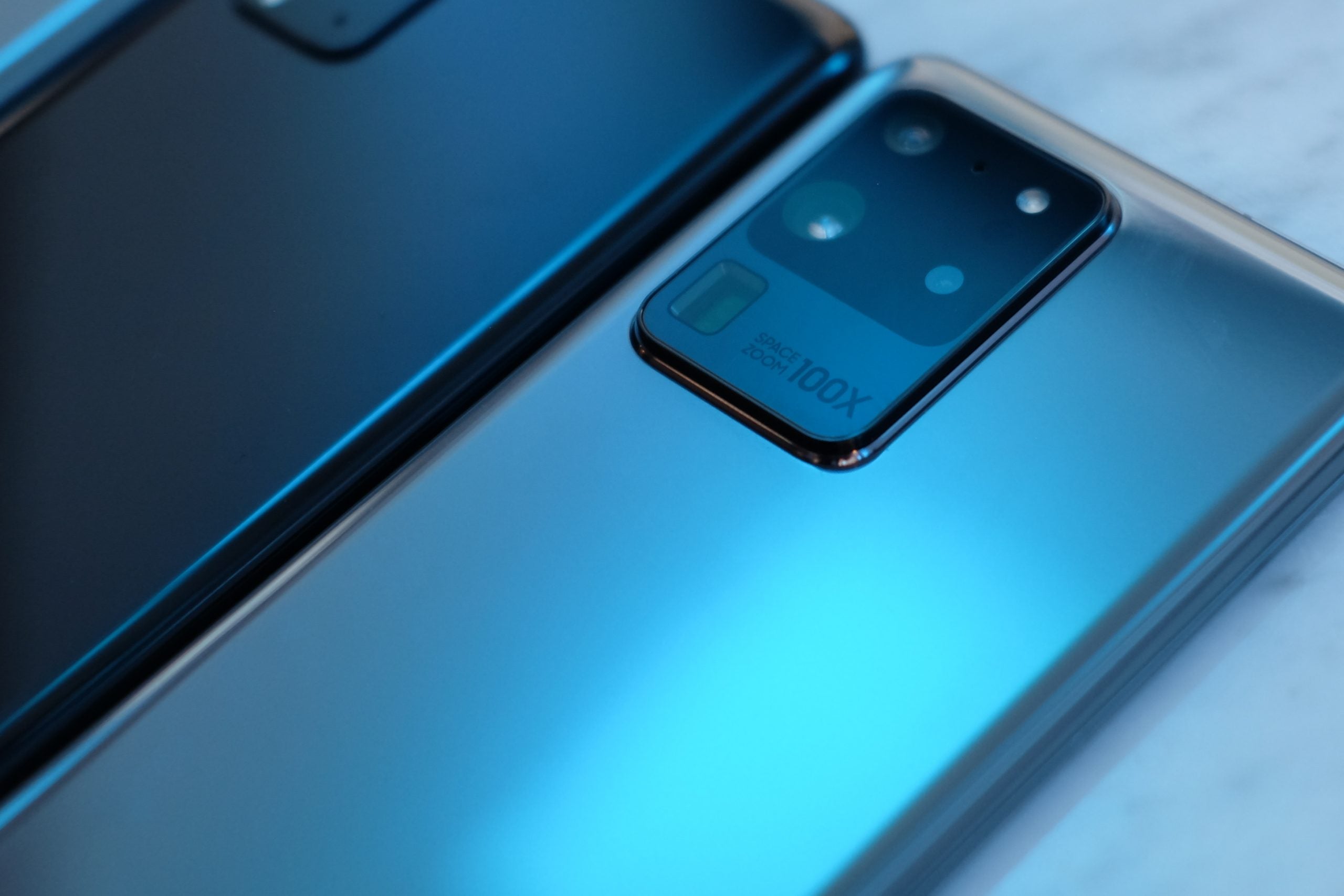Samsung Galaxy S20 Plus Review
Just like the S20, but with the bigger screen and that's no bad thing
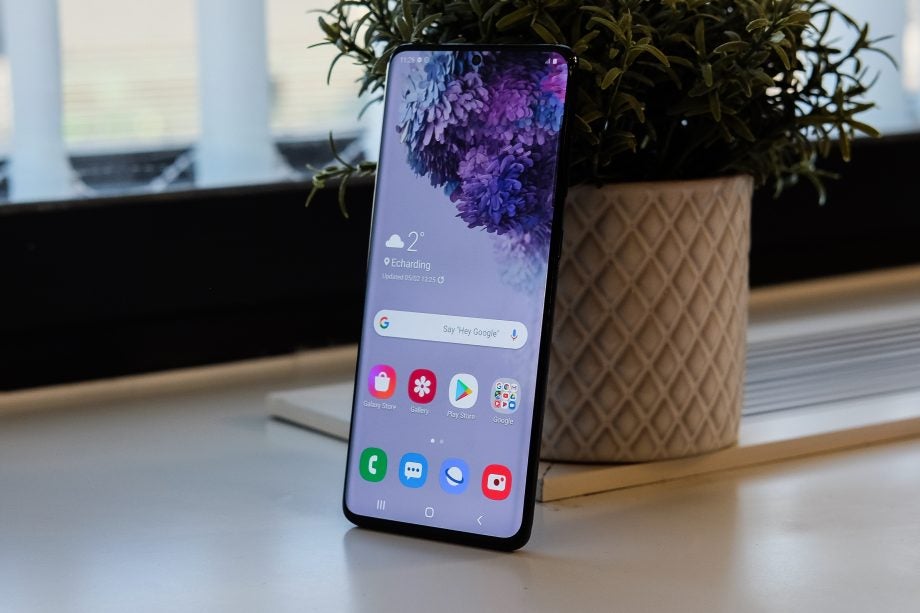

Verdict
The Galaxy S20 Plus is the middle child in Samsung’s latest flagship phone lineup, but make no mistake, it’s still an absolute beast of a phone.
For your hard-earned cash, you’ll be treated to a stellar display, typical Samsung design and pretty much all the bells and whistles you’d expect from a flagship smartphone. So, if you’re after an Android flagship, the Galaxy S20 Plus is one of the best options you’ll get at the moment.
Or, at least it was until the Galaxy S21, S21 Plus and S21 Ultra launched this year. You can read our reviews of all the new phones now.
The only downsides of the S20 Plus are the use of a slightly less efficient Exynos CPU outside of the US plus a few niggling annoyances with Samsung’s software – which even Google’s taken an exception to in recent years.
Design and Screen
- 120Hz OLED display is excellent
- 1440p resolution and HDR support
- More compact than the Ultra
The Galaxy S20 Plus features a near-identical design to the regular Galaxy S20, the only obvious differences being its slightly larger dimensions and the fact it comes with 5G as standard – which is the biggest contributor to its higher price tag.
If like us, you’re fans of Samsung’s recent phone designs this is no bad thing and the Plus will instantly feel familiar and at home in your hand. For your money, you’ll be treated to a super premium mixed metal and glass phone with a close to unnoticeable all-screen front and slightly curved sides.
This, plus its sensible 6.7-inch form factor make it wonderfully comfortable to hold and hit what I would describe as the sweet spot for phone sizes. It’s large enough to watch movies, game and read books on, without feeling cumbersome – which is a key issue we had with the larger, Galaxy S20 Ultra.
I am also a big fan of Samsung’s decision to put the hole-punch front camera housing in the top middle of the phone’s screen, like the one seen in the Galaxy Note 10. While I am still not a huge fan of hole punch notches the central placement feels far less intrusive than the side placement seen on the Galaxy S10, which puts it where your thumb naturally sits when holding the phone landscape.
- Read our Samsung Galaxy S20 Ultra review
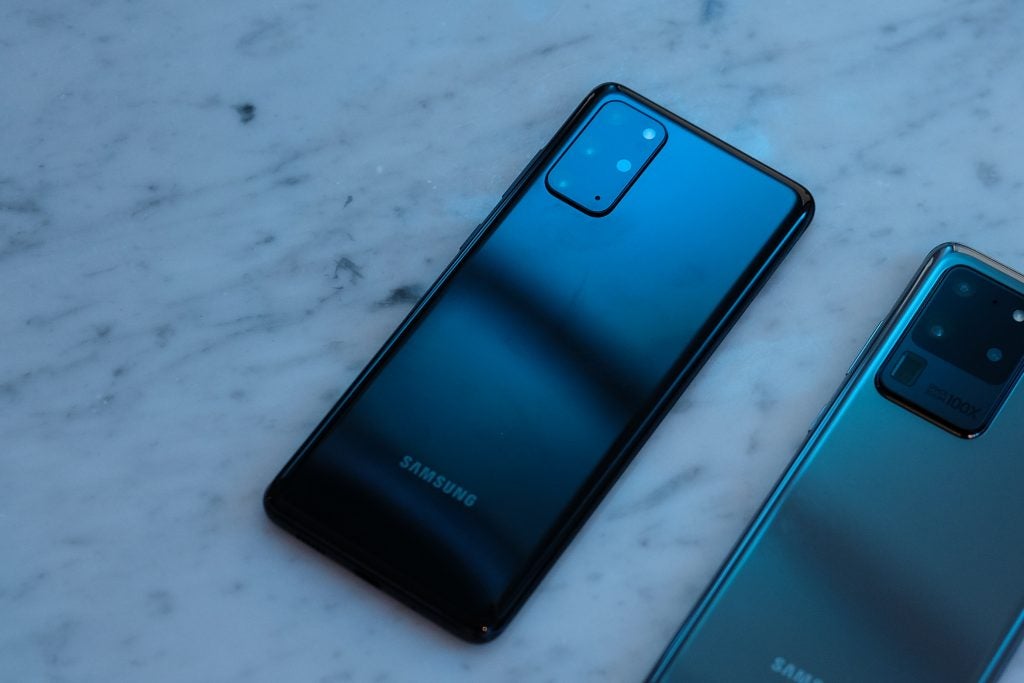
The only feature I’m not completely set on is the rear camera housing, which has a distinct Pixel 4 look. Though it houses four well-specced sensors and is technically a very impressive bit of engineering, the housing noticeably protrudes from the phone’s back and makes you feel like it’s been designed to sit in a case – something Samsung annoyingly doesn’t provide in the box.
This is doubly troublesome as we’d really recommend that any buyer pick up a case the moment they buy any S20 handset. Though the naked glass design looks beautiful and is wonderfully well made, as the number of cracked Galaxy S9 and Galaxy S10s you’ll spot in the wild attest, glass-backed phones will break when met with even moderate force if left unprotected.
The in-built fingerprint scanner is a final minor annoyance. The scanner is baked into the screen and, while it generally works fine, it feels noticeably less responsive than key competitors’ like the OnePlus 7T Pro, which has similar tech. Thankfully the face unlock is accurate enough that I never had to rely on the sensor too much, however.
[videoai]Samsung Super AMOLED displays have a reputation for being best in class. For the most part, this remains the case with the Galaxy S20 Plus, which comes loaded with a 6.7-inch, high refresh rate Super AMOLED panel.
Though it’s smaller than the Ultra’s equivalent screen, it has the same QHD+ max resolution and 120Hz top refresh rate. The 120Hz refresh rate is a key selling point that’s being pitched at gamers. It lets the screen display way more images per second than the older S10, which had a 60Hz refresh rate.
This can, when coupled with a high polling rate, offer gamers a competitive advantage reducing the delay between them enacting command and it rendering on screen. It’ll also make the screen generally smoother to use when doing basic things like scrolling. We’ve seen the trick work to great effect in handsets like the OnePlus 7T family, which feature slightly slower 90Hz panels.
The only downside is how the increased refresh rate drains the battery significantly faster. This is why Samsung’s locked the screen to only display in 1080p resolutions when running in 120Hz. This sounds like a big limiter, but honestly, with real-world use I didn’t mind the compromise, feeling the screen uniformly was still sharp enough.
Colours and brightness levels are also uniformly excellent. Though I found the out of the box vivid setting a little warm for my liking, you’ll struggle to get a prettier looking display on a phone. Movies look brilliant and are uniformly atmospheric thanks to the screen’s HDR support and stellar contrast.
My only quibble is that switching the refresh rate is a bit of a faff and I’d really like to see some form of automation applied, like what happens on gaming monitors. There’s no point having a screen run at 120Hz when you’re watching video content that’s mastered at a lower refresh rate.
We’ve also seen that making a screen truly variable and able to drop below 60Hz can seriously improve battery life thanks to the Apple Watch 5 – which can drop to run a 1Hz when it’s just displaying the time.
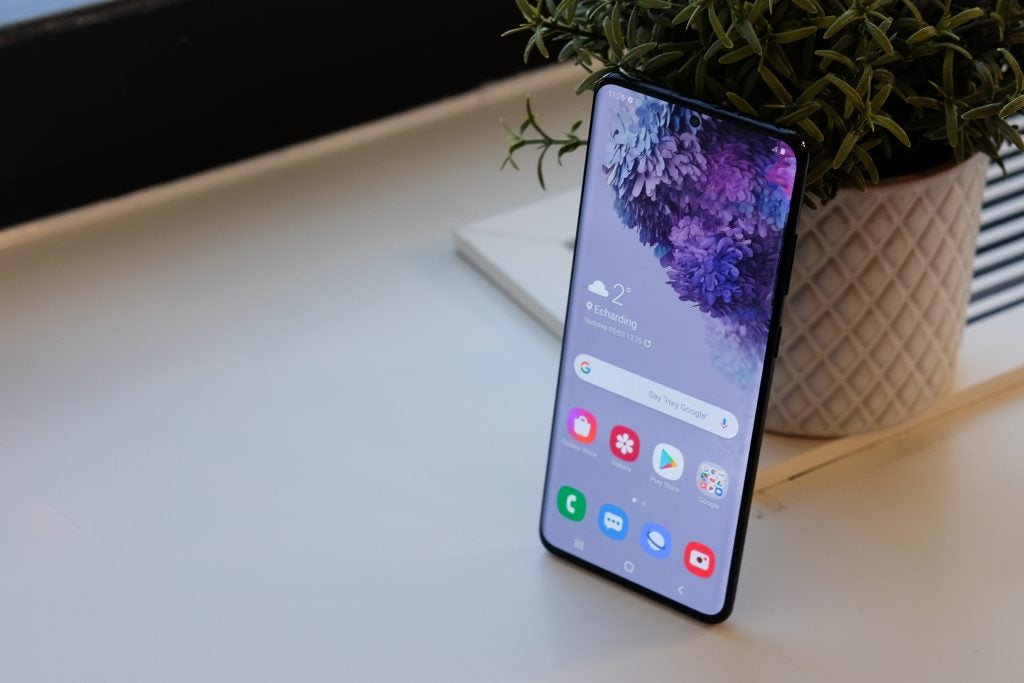
Performance
- Exynos or Snapdragon chipsets depending on where you live
- 5G support on all models
- Samsung’s One UI overlay over the top of Android
Under the hood, the Plus is an absolute beast of a best phone, regardless of which CPU option you get – like all Samsung phones the US version of the S20 Plus uses a Qualcomm Snapdragon, not Exynos chip.
The Exynos version I tested blitzed through every task I threw at it hassle-free and without any overheating issues, which has been a problem on past phones I’ve tested running Samsung chips.
Playing a marathon-length PUBG game the S20 Plus ran at 120Hz with zero issues or sign of CPU throttling. The 12GB of RAM is also complete overkill and lets the handset run multiple processes with zero delay or noticeable slowdowns.
The only feature I found could give it pause was 8K video recording. Setting the handset to constantly capture 8K footage at 30fps the back of the handset did begin to heat up and battery drain was terrible, but that’s to be expected.
I’d also have liked to see the 512GB version sell in the UK, though the inclusion of a microSD slot means the regular 128GB model should be more than good enough for most people.
The Galaxy S20 Plus’ synthetic benchmark scores mirrored my real-world findings. You can see how it’s benchmarks compared to key rivals’ in the table below.
| Geekbench 5 single core | Geekbench 5 dual core | Antutu | |
| Samsung Galaxy S20 Plus | 947 | 2856 | 520136 |
| Huawei Mate 30 Pro | 749 | 2910 | 452421 |
| iPhone 11 Pro | 1334 | 3552 | 558778 |
| OnePlus 7T Pro | 745 | 2672 | 471814 |
Camera
- Three cameras on the back. Including a 12MP main sensor
- You also get a 12MP ultra wide
- And finally a 48MP camera for zooming
The Plus’ camera setup is the only area to have serious cuts compared to Samsung’s top dog Ultra model.
The Plus comes with three main camera sensors. Specifically, it features a 12-megapixel f/1.8 main, a 12-megapixel ultra-wide, and 64-megapixel telephoto lens. Unlike the regular S20, it also comes with a DepthVision camera for 3D sensing that’s designed to help improve things like Live Focus and AR accuracy.
The Ultra, by comparison, features a 108-megapixel, f/1.8 OIS main, 12-megapixel ultra-wide and a 48-megapixel telephoto triple sensor setup.
The differing set up between the two means the S20 Plus doesn’t feature the Ultra’s headline-grabbing 100x ‘Space Zoom’, which on paper will be an annoyance for people that like to take snaps at live events like gigs and sports fixtures.
Instead, you can 3x Hybrid Optic zoom and 30x ‘Super Resolution’ zoom. The truth is that despite the compromise we couldn’t take decent snaps beyond 10x zoomed on either, though quality remained slightly better on the Ultra.
Zooming aside, the Galaxy S20’s camera is actually still very capable and a clear step up on Samsung’s previous S10 Plus.
Shooting in regular light it’s immediately obvious Samsung’s listened to user feedback and dialled back the amount of image processing the phone does. This gives photos a much more realistic look than past Samsung phones. Colour and contrast are particularly improved, though sharpening has also been reduced.
The Plus is free of the focussing issues we found playing the Ultra. Unlike it’s beefier sibling the auto-focus uniformly found its mark outside of very difficult shooting conditions, like mixed lighting.
Portrait shots are nicely detailed and free of the aberrations that creep into some competing phones. Generally, the camera managed to produce usable bokeh effects, where the background is slightly blurred while the subject is in focus.
The only issue is that, despite the stellar work Samsung’s done elsewhere, the portrait mode still has a tendency to over smooth people’s faces and skin, giving them an odd, Thunderbird-puppet-like, look on occasion.
Low light performance has been noticeably improved on the S10-line. While I’m not convinced it’s as good as best camera phones like the Pixel 4, or Huawei P30 Pro, photos taken in low light are significantly better than those taken on the S10 Plus.
They’re less noisy, feature better contrast and generally look more realistic. I also found, on occasion, they could match, if not beat the Ultra’s performance in dim conditions, which is surprising given the latter’s use of clever pixel-binning tech.
8K video recording is the only camera feature I’m not completely sold on. The mode works, but the 30fps capture cap makes the footage look significantly choppier than the 4K and 1080p record options. This, plus the heating issues and fact there aren’t a lot of cases for capturing in 8K, particularly on a phone, makes it feel a little pointless.
You can see a selection of photos taken on the Galaxy S20 Plus below.




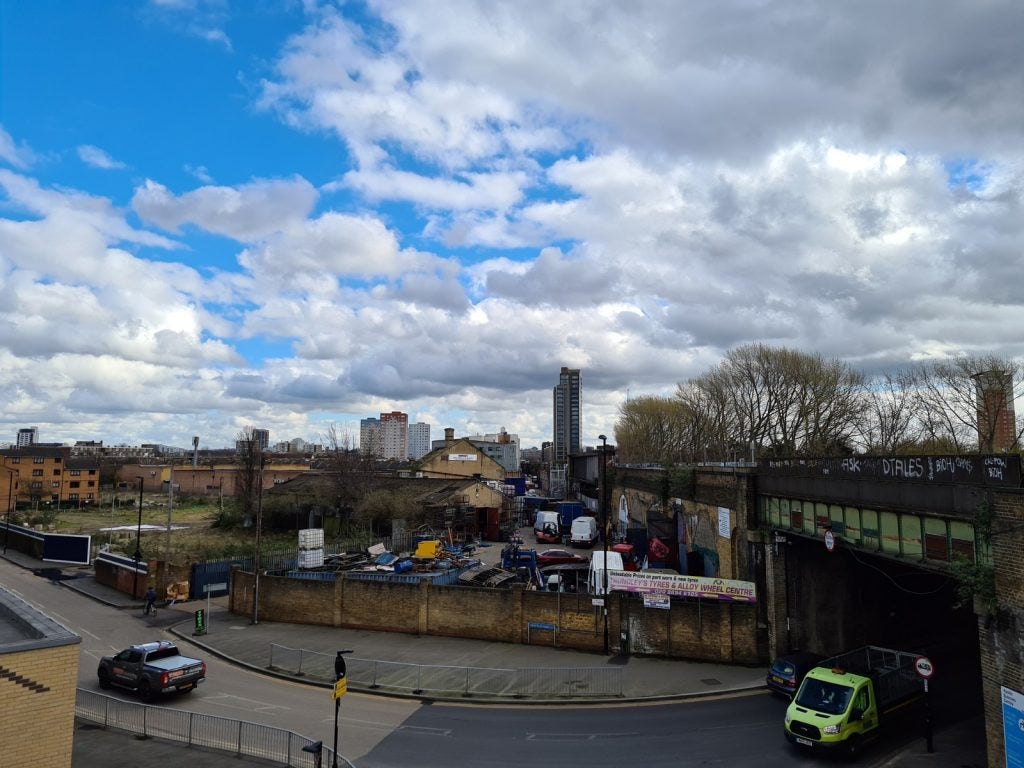
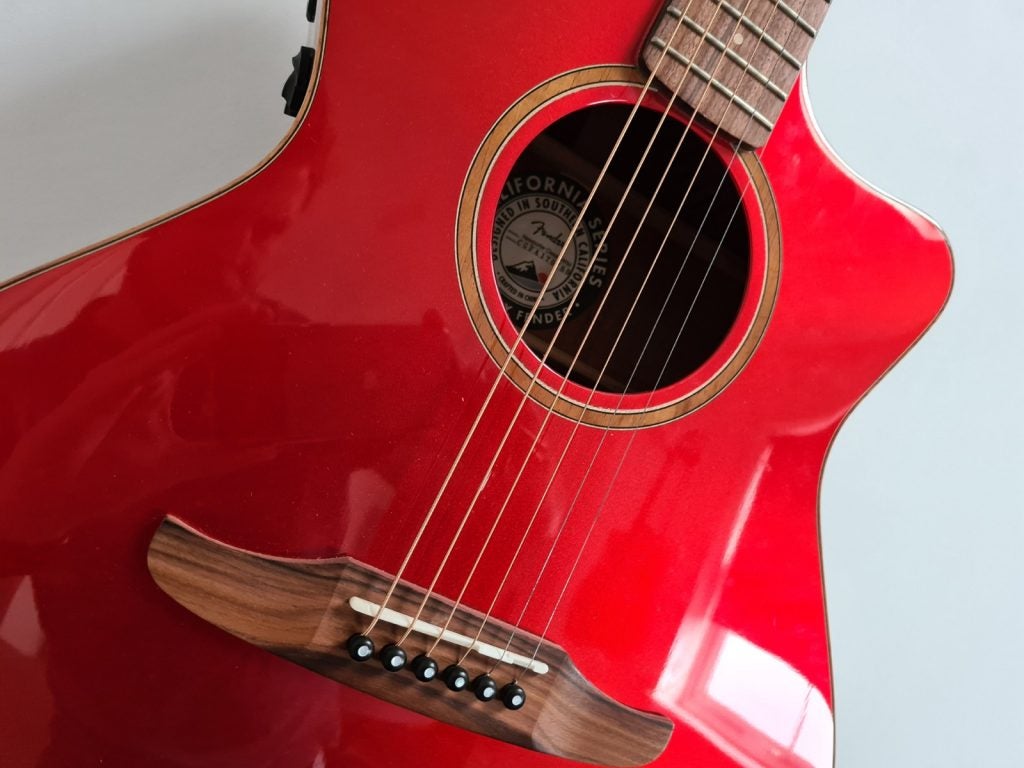
Battery life
- Inside there’s a 4500mAh battery
- A full recharge should take around 90 minutes
- Charger in the box
Battery life has always been a tricky area for the Exynos variants of Galaxy phones. Which is why with the added workload of 5G connectivity and a 120Hz screen I went into this review with serious concerns about the Galaxy S20’s battery life.
With real-world testing, I got a similar experience to what our reviewer got using the S20 Ultra. This means battery life will vary massively depending on how you use the phone.
With the screen set to 60Hz and a QHD+ resolution, I get decent battery life out of the S20 Plus. Using it as my main work and personal phone with an active 5G SIM, it generally lasted about a day to a day and a half before needing a top-up charge. Streaming video in this setting it discharged 6-10% of its charge per hour, which is pretty par for the course on a flagship at the moment.
This is also taking into account the fact that, outside of a dedicated trip to Kings Cross station to test it, the phone spent the majority of its time running in 4G. 5G is still a rarity outside of select very specific areas in the UK.
Jumping to 120Hz battery life drops, however. Running at 120Hz, even with the resolution drop, I found myself reaching for the charger before the end of the day, even with moderate use. Moderate use entailed listening to music during my morning workout and commute, regularly checking incoming messages and my social media feeds, a couple of hours Netflix streaming and a game of PUBG before bed.
Thankfully, charging the S20 Plus is quick and easy thanks to the inclusion of 25W and Qi (15W) wireless support. Charging the 4500mAh battery took around an hour and a half using the supplied charger.
Software
The only final issue I have with the S20 Plus is the same one I’ve had with pretty much every Samsung phone for the last decade – its use of a custom Android skin. Being fair to Samsung, it has done great work cleaning up its software from the bad old days of Touchwiz.
There are less duplicate apps and bloatware present than ever before. But I still hate the custom icons Samsung uses and can’t help but think most the menu system changes are completely pointless, or outright harmful to the user experience. Bixby is also a poor alternative to Google’s own Assistant that quite frankly needs to get into the sea – thankfully it’s very easy to remove and disable most encounters with Samsung’s virtual assistant.
This would be forgivable were it not for the fact the changes radically change Android, to the point even Google’s allegedly told Samsung to stop messing with it. This means it will likely take a lot more time and effort for the new Galaxy phones to be upgraded to future versions of Android.
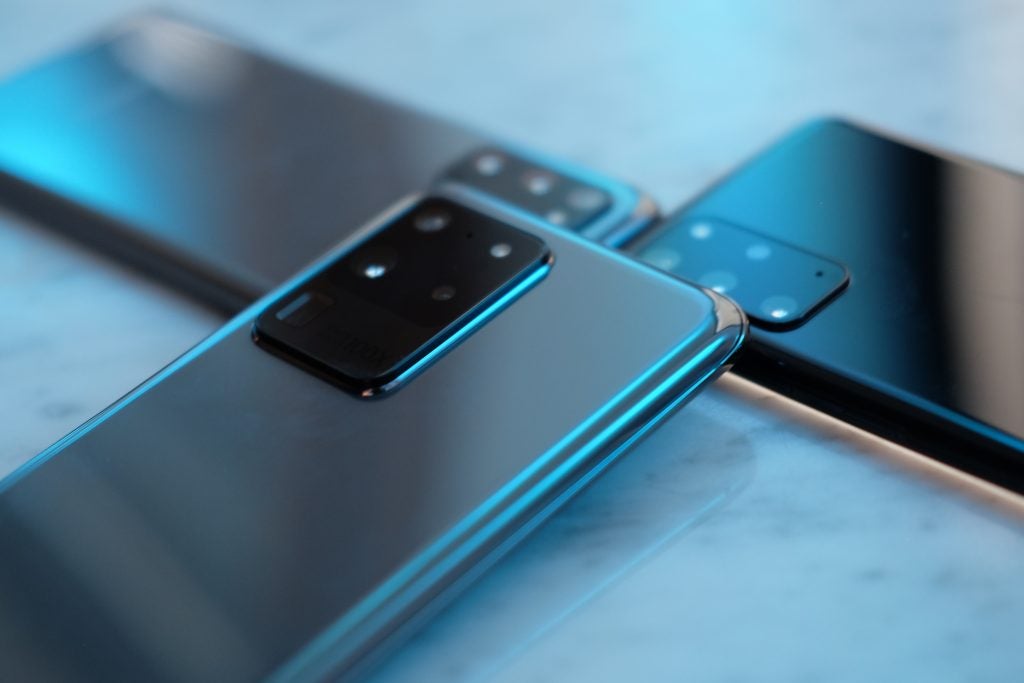
You should buy it if…
Want a high-res 120Hz display
Samsung ditched the 1440p resolution with the 2021 Samsung Galaxy S21, meaning if you don’t want the Ultra you’d have to settle for 1080p.
You shouldn’t buy it if…
You want the best flagship camera
Samsung couldn’t quite beat some of the best competition in the smartphone camera space with the S20. It’s good, just not fantastic.
FAQs
The Samsung Galaxy S20 Plus is a 5G phone
The Galaxy S20 Plus has an IP68 rating
Specs
Jargon buster
USB-C
The modern USB connector you’ll find on most Android phones, new laptops, cameras and games consoles. It’s reversible and used for charging along with data-transfer.
OLED and AMOLED
Types of displays that use self-lighting pixels to provide greater contrast and more vibrant colours than a typical LCD display, as well as sharper blacks.
mAh
An abbreviation for milliampere-hour and a way to express the capacity of batteries, especially smaller ones in phones. In most cases the higher the mAh, the longer the battery will last but this isn’t always the case.
Exynos 990
Samsung’s 2020 flagship mobile chipset. Used in phones in the UK, wider Europe and some others.
Snapdragon 865
Qualcomm’s 2020 flagship chipset and the platform that powers the phone. This includes the CPU, GPU, ISPs for the camera and modem.
OneUI
Samsung’s skin that sits over the top of Android on all of its Android devices.

